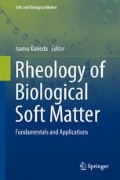Abstract
Mastication and swallowing are essential steps in food ingestion and nutrient absorption in humans. Mastication is the process in which food taken from the mouth is crushed and mixed with saliva in the oral cavity to create food boluses that are optimal for swallowing. The use of facial and jaw muscles, in addition to teeth, is necessary for mastication. Foods with gel-like texture are crushed by mastication, and the resulting boluses are transferred from the oral cavity to the pharynx with assistance from tongue pressure and then to the esophagus by suction generated upon elevation of the larynx. Bolus formation by mastication is closely associated with the swallowing process. Meanwhile, liquid foods are transferred from the oral cavity to the pharynx without mastication. However, the swallowing method of a drink changes by the additions included in the drink. It is important to know the relationship between physical property of drink and the linguapalatal swallowing pressure, the relationship between the preprandial food size and the nature of food bolus, and then the relationship between the texture property of the food bolus and the swallowing.
Access this chapter
Tax calculation will be finalised at checkout
Purchases are for personal use only
References
Lo GS, Goldbeq AP, Lim A, Grundhauser J, Anderson C, and Schonfeld G, Soy fiber improves lipid and carbohydrate metabolism in primary hyperlipidemic subjects. AtheroscIerosis, 62, 239–248 (1986).
Tsai AC, Vinik AI, Lasichak A, and Lo GS, Effects of soy polysaccharide on postprandial plasma glucose, insulin, glucagon, pancreatic polypeptide, somatostatin, and triglyceride in obese diabetic patients. Am. J. Clin. Nutr., 45, 596–601 (1987).
Marlett JA, McBurney MI, and Slavin JL, Position of the American Dietetic Association: health implications of dietary fiber. J. Am. Dietetic Assn., 102, 993–1000 (2002).
Shahidi F, “Functional foods: their role in health promotion and disease prevention,” J. Food Sci., 69, 146–149 (2004).
Cichero JAY, Jackson O, Halley PJ, and Murdoch BE, Which One of these is not like the others? An inter-hospital study of the viscosity of thickened fluids. J. Speech Lang. Hear. Res., 43, 537–547 (2000).
Cichero J, Jackson O, Halley PJ, and Murdoch BE, How thick is thick? Multicenter study of the rheological and material property characteristics of mealtime fluids and videofluoroscopy fluids. Dysphagia, 15, 188–200 (2000).
Glassburn DL, and Deem JF, Thickener viscosity in dysphagia management: variability among speech-language pathologists. Dysphagia, 13, 218–222 (1998).
Nicosia MA, and Robbins JA, The fluid mechanics of bolus ejection from the oral cavity, J. Biomech., 34, 1537-1544 (2001).
Pelletier CA, Management of Adult Neurogenic. Dysphagia, 12, 74–78 (1997).
Moritaka H, Sawamura S, Kobayashi M, Kitade M, and Nagata N, Relation between the Rheological Properties and the Swallowing Characteristics of Vegetable Juices Fortified with Carrot Puree. Biosci. Biotechnol. Biochem.,76(3), 429–435 (2012).
Tashiro A, Hasegawa A, Kohyama K, Kumagai H, and Kumagai H, Relationship between the Rheological Properties of Thickener Solutions and Their Velocity through the Pharynx as Measured by the Ultrasonic Pulse Doppler Method. Biosci. Biotechnol, Biochem., 74, 1598–1605 (2010).
Kumagai H, Tashiro A, Hasegawa A, Kohyama K, and Kumagai H, Relationship between flow properties of thickener solutions and their velocity through the pharynx measured by ultrasonic pulse method. Food Sci. Technol. Res., 15, 203–210 (2009).
Moritaka H, and Nakazawa F, The rheological and swallowing properties of rice starch. Food Sci. Technol. Res., 15, 133–140 434 (2009).
Green BG, Alvarez-Reeves M, George P, and Akirav C, Chemesthesis and taste: evidence of independent processing of sensation intensity. Pysiol Behav., 86(4), 526–537 (2005).
Moritaka H, Kitade M, Sawamura S, Takihara T, Awano I, Ono T, Tamine K, and Hori K, Effect of carbon dioxide in carbonated drinks on linguapalatal swallowing pressure, Chem. Senses, 39, 133–142 (2014).
Ono T, Hori K, and Nokubi T. Pattern of tongue pressure on hard palate during swallowing. Dysphagia, 19(4), 259–264 (2004).
Dessirier JM, Simons CT, Carstens MI, O’Mahony M, and Carstens E, Psychophysical and neurobiological evidence that the oral sensation elicited by carbonated water is of chemogenic origin, Chem Senses, 25, 277–284 (2000).
Kitade M, Kashiki H, Kobayashi N, and Moritaka H, Chewing and swallowing properties of different-sized agar gels. Nippon Shokuhin Kagaku Kaishi, 59, 369–377 (2012). (in Japanese)
Kitade M, Kobayashi N, and Moritaka H, Relationship between number of chewing cycles and fragment size of agar gels, Nippon Shokuhin Kagaku Kaishi, 60, 554–562 (2013). (in Japanese)
Kobayashi N, Kohyama K, Sasaki Y, and Matsushita M, Statistical laws for food fragmentation by human mastication. J. Phys. Soc. Jpn., 75, 083001 (2006).
Kobayashi N, Kohyama K, and Shiozawa K, Fragmentation of a viscoelastic food by human mastication, J. Phys. Soc. Jpn., 79, 044801 (2010).
Matsushita M, and Sumida K, How do thin glass rods break-Stochastic models for one-dimensional brittle fracture. Bull. Fac. Sci. & Eng. Chuo Univ., 31, 69–79 (1997).
Kitade M, Sagawa A, Fuwa M, and Moritaka H, Properties of the masseter and digastric muscles during swallowing of agar gels of different sizes. Nippon Shokuhin Kagaku Kaishi, 61, 293–301 (2014). (in Japanese)
Ishihara S, Nakamura M, Funami T, Odake S, and Nishinari K, Viscoelastic and fragmentation characters of model bolus from polysaccharide gels after instrumental mastication. Food Hydrocolloids, 25, 1210–1218 (2011).
Author information
Authors and Affiliations
Corresponding author
Editor information
Editors and Affiliations
Rights and permissions
Copyright information
© 2017 Springer Japan
About this chapter
Cite this chapter
Moritaka, H. (2017). Swallowing and the Rheological Properties of Soft Drink and Agar Gel. In: Kaneda, I. (eds) Rheology of Biological Soft Matter. Soft and Biological Matter. Springer, Tokyo. https://doi.org/10.1007/978-4-431-56080-7_4
Download citation
DOI: https://doi.org/10.1007/978-4-431-56080-7_4
Published:
Publisher Name: Springer, Tokyo
Print ISBN: 978-4-431-56078-4
Online ISBN: 978-4-431-56080-7
eBook Packages: Chemistry and Materials ScienceChemistry and Material Science (R0)

